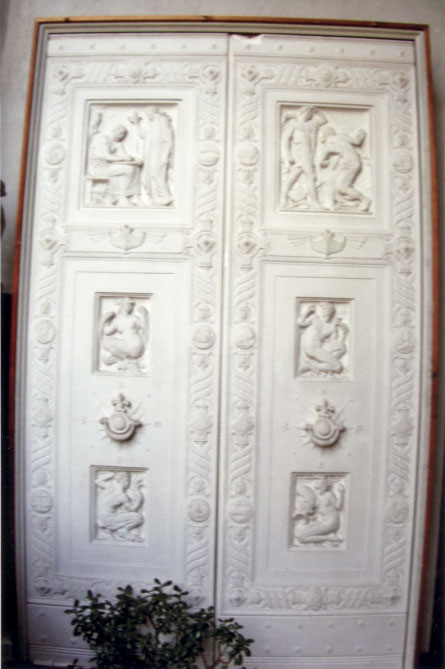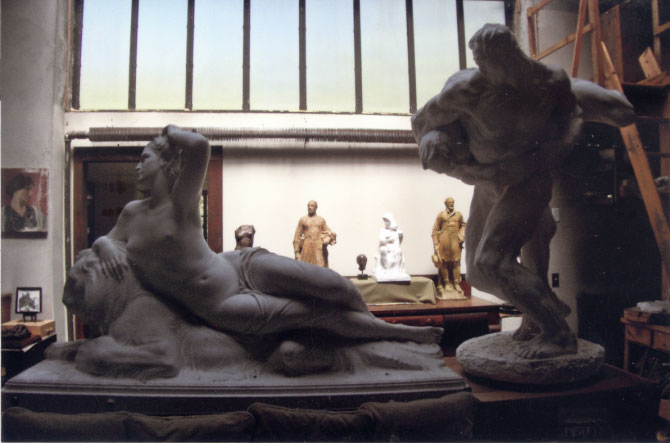
Home Structural Products & Services, Stairlifts
Structural Products & Services, Stairlifts
Furniture, Clocks,
Accessories
Antiques, Folk Art,
Fine Art, Auction Houses
BERTHOLD NEBEL'S STONE STUDIO IN WESTPORT
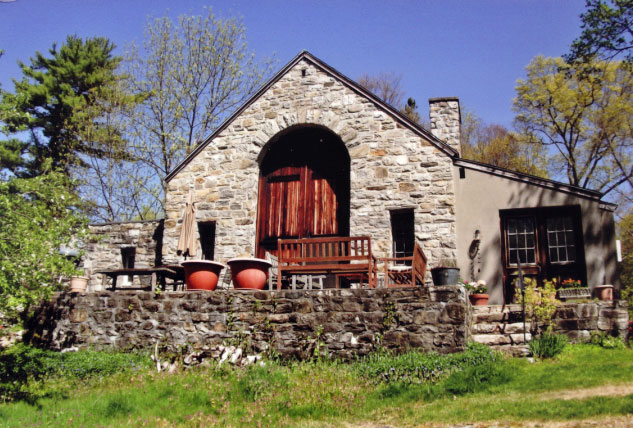 Berthold Nebel's Stone Studio in Westport |
The sculptor Berthold Nebel was one of those artists who, in the middle decades of the twentieth century, broke away from the classical tradition in order to create art that struck more directly at the heart of the public’s sensibilities.
Nebel was born in Switzerland in 1889 and came to the United States with his parents as a one year old.
|
In 1920, Nebel returned to the United States with his Italian wife and young son, Emil. Later that year he accepted the post of the School of Sculpture at the Carnegie Institute of Technology in Pittsburg. While teaching at Carnegie Tech, Nebel and his wife had a daughter named Lucia.
| Nebel became involved in architectural sculpture. He opened a studio New York in 1925 and was commissioned to make portrait statues of Confederate General Joseph Wheeler for the rotunda of the United States Capitol in Washington, D.C., and of General John Sedgwick for the front of the Connecticut State Capitol in Hartford. | 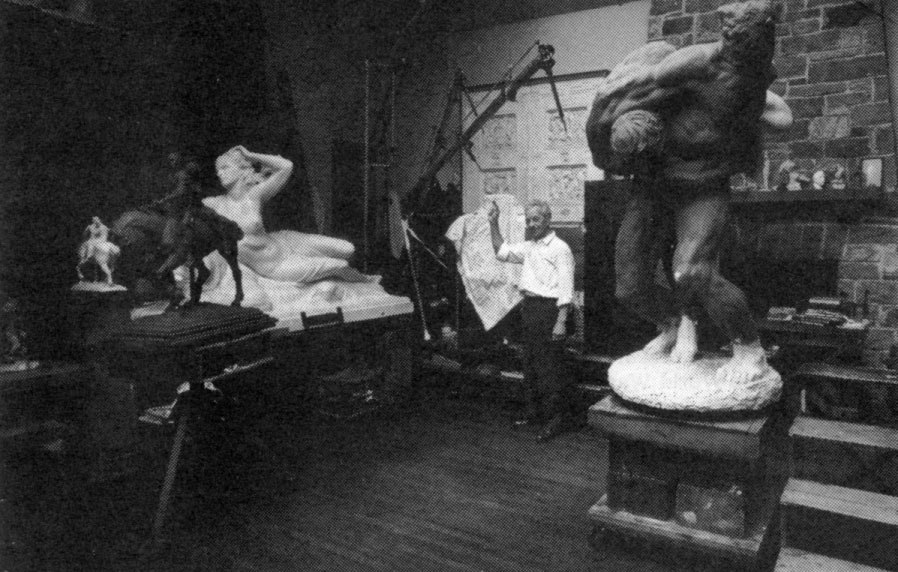 Berthold Nebel in his Westport studio |
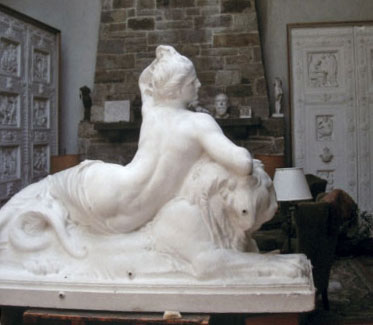 Plaster cast of "Nereid" |
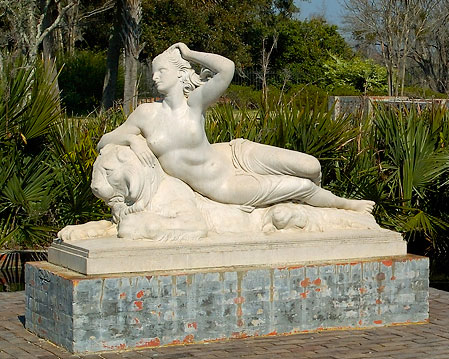 Statue of "Nereid" at Brookgreen Gardens, South Carolina |
Above: Plaster cast of bronze doors Nebel created for the American Geographic Society and the Museum of the American Indian. |
In 1928, he began a ten-year series of commissions that included two sets of bronze doors for the Museum of the American Indian and the Museum of the National Geographic Society. This project required more working space than he had in New York, so in 1930 he bought a house on eight acres in Westport. He had a stone studio built on the property and this was where he lived and worked until his death in 1964. One of his last works was called “Adventure.” It showed a man and a woman on a farmhorse riding toward a new life. The renewal of the human spirit was the lifelong theme of Nebel’s work.
|
Nebel was also commissioned by Archer Huntington to execute nine reliefs panels, 19 feet high, in limestone for the west side of the building of The Hispanic Society of America at 155th Street and Broadway. Each panel's single figure show a representation of a people - Celt, Primitive Man, Roman, Carthaginian, Arab, Phoenician, Greek, Visigoth, and Christian Knight, who had invaded and flourished in Spain. This work went on for ten years and the panels were installed in 1939
This past May, I visited Nebel’s daughter, the photographer Lucia Nebel White, at Nebel’s stone studio in Westport. Most of the land and the house have been sold, but Lucia, 90, lives in the studio, which she keeps as a shrine to the memory of her father and his work. Plaster casts and sculptures of all sizes fill two big rooms that were flooded with sunlight that spring afternoon. I listened to Lucia talk of years gone by, and, instead of being enveloped in the past, I felt an immediacy of inspiration and saw some of the light toward the future that shines from this quiet stone studio on a peaceable, leafy street in Westport.




